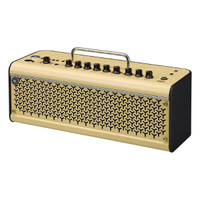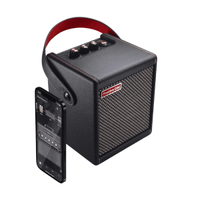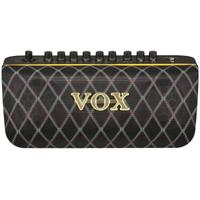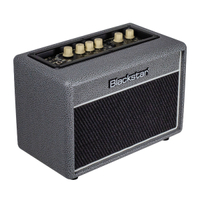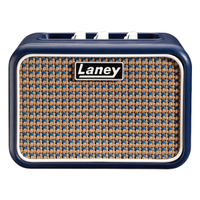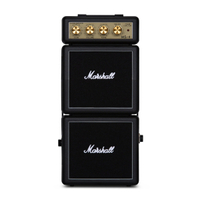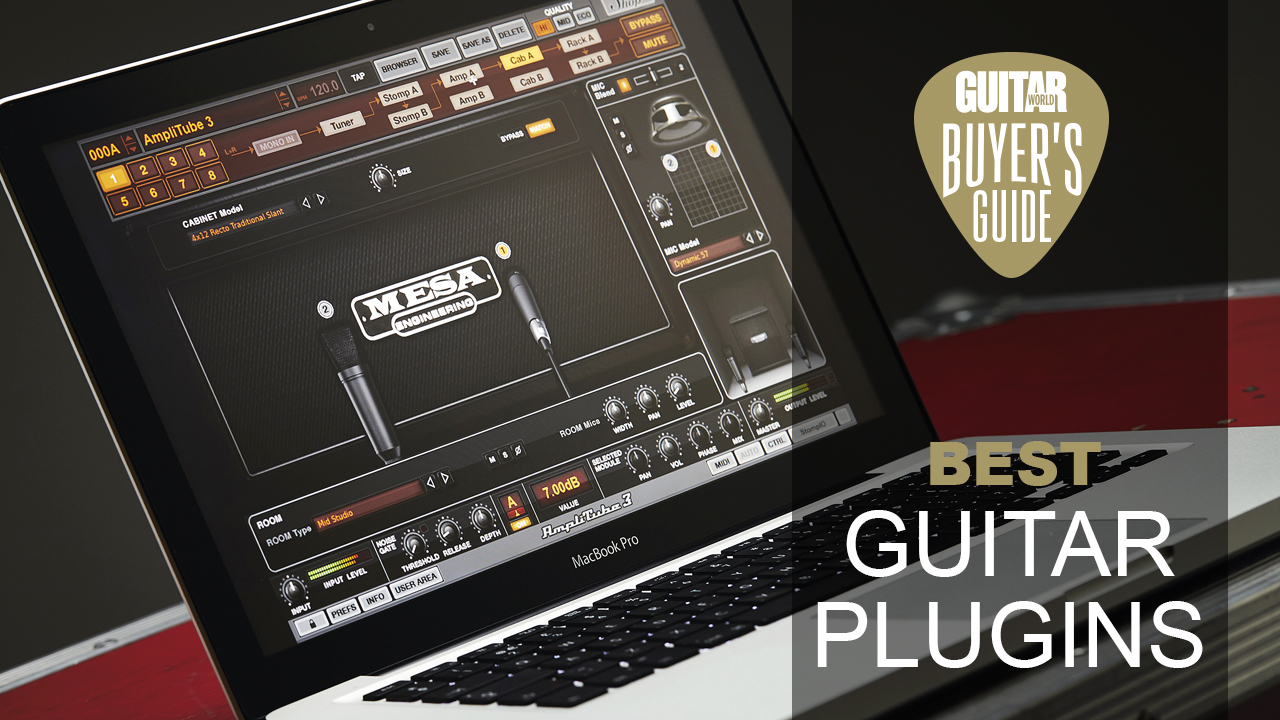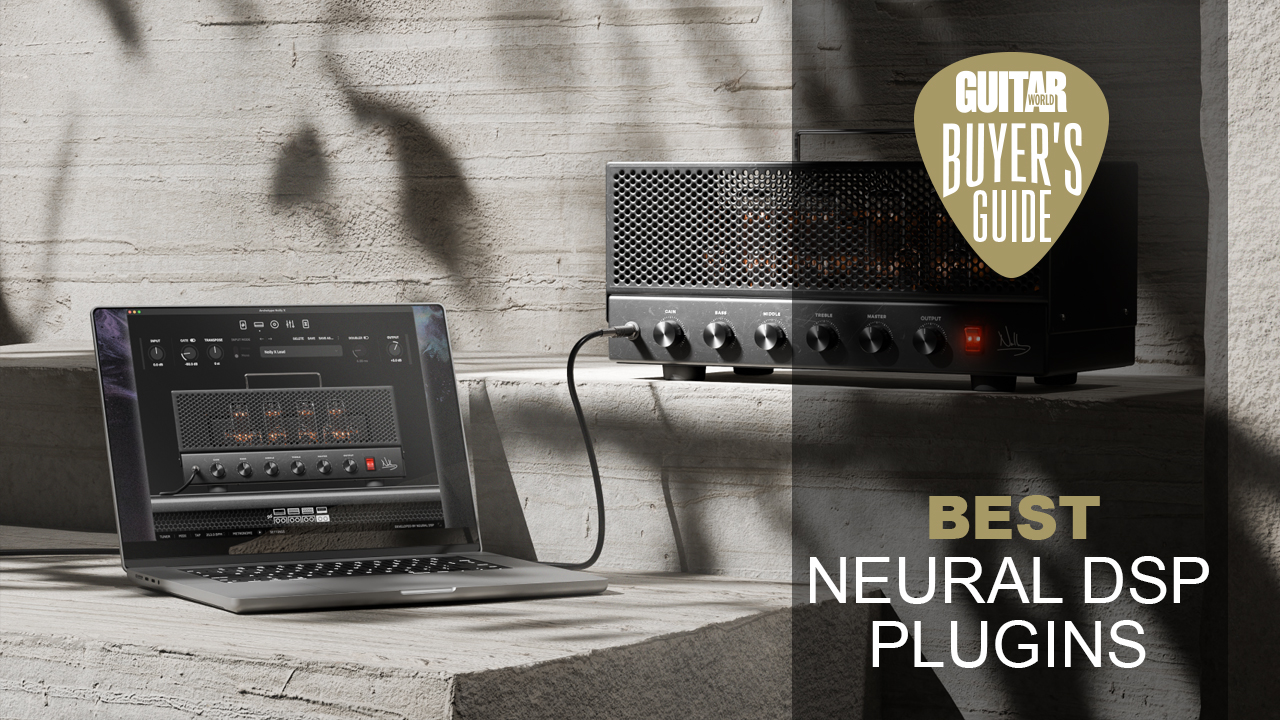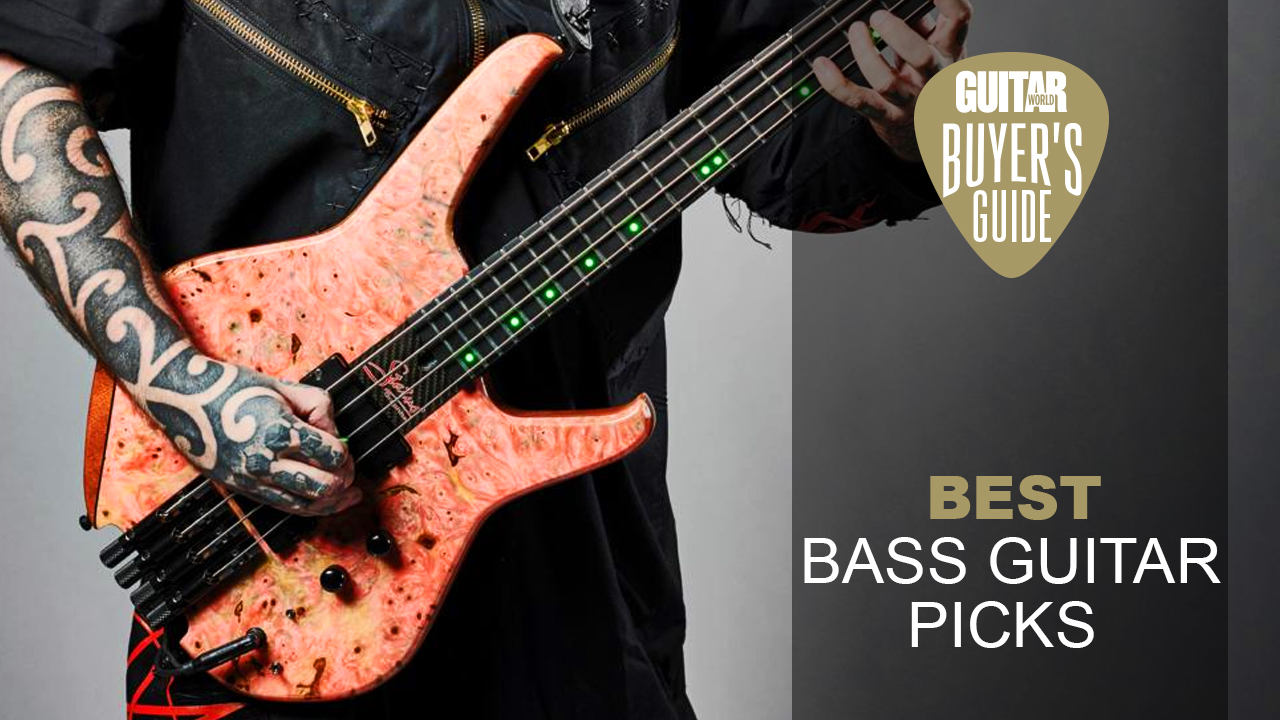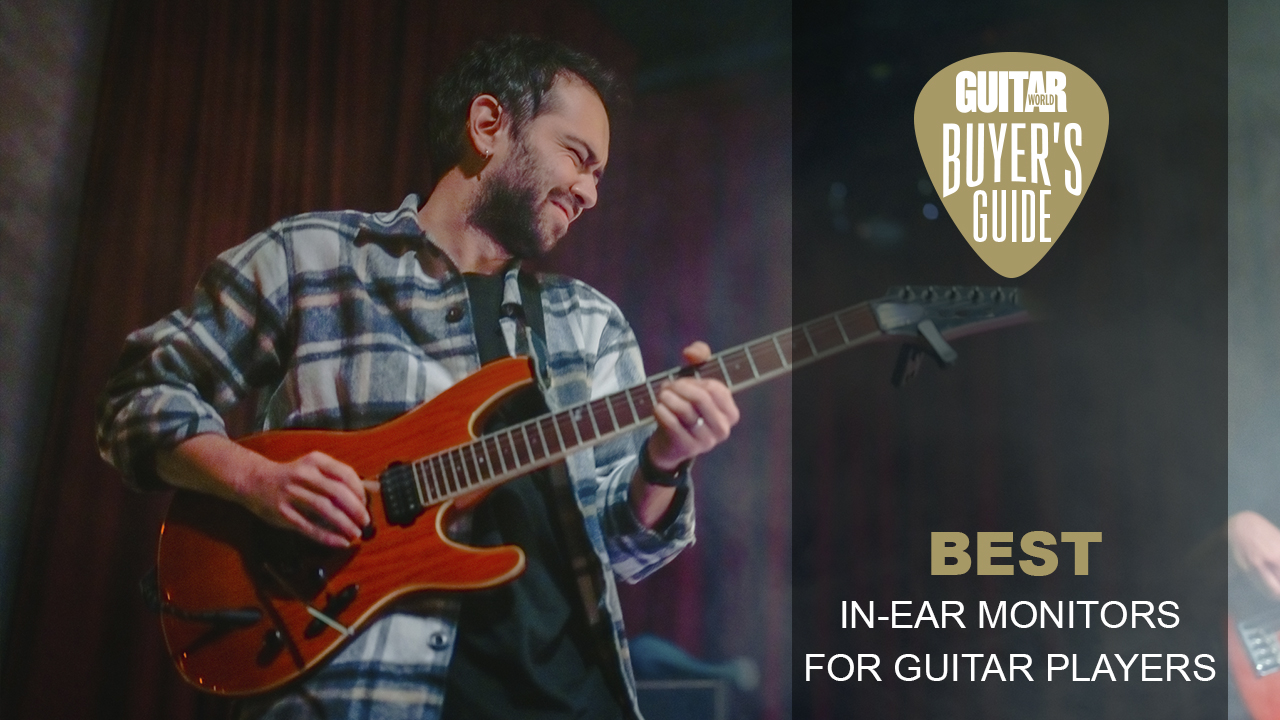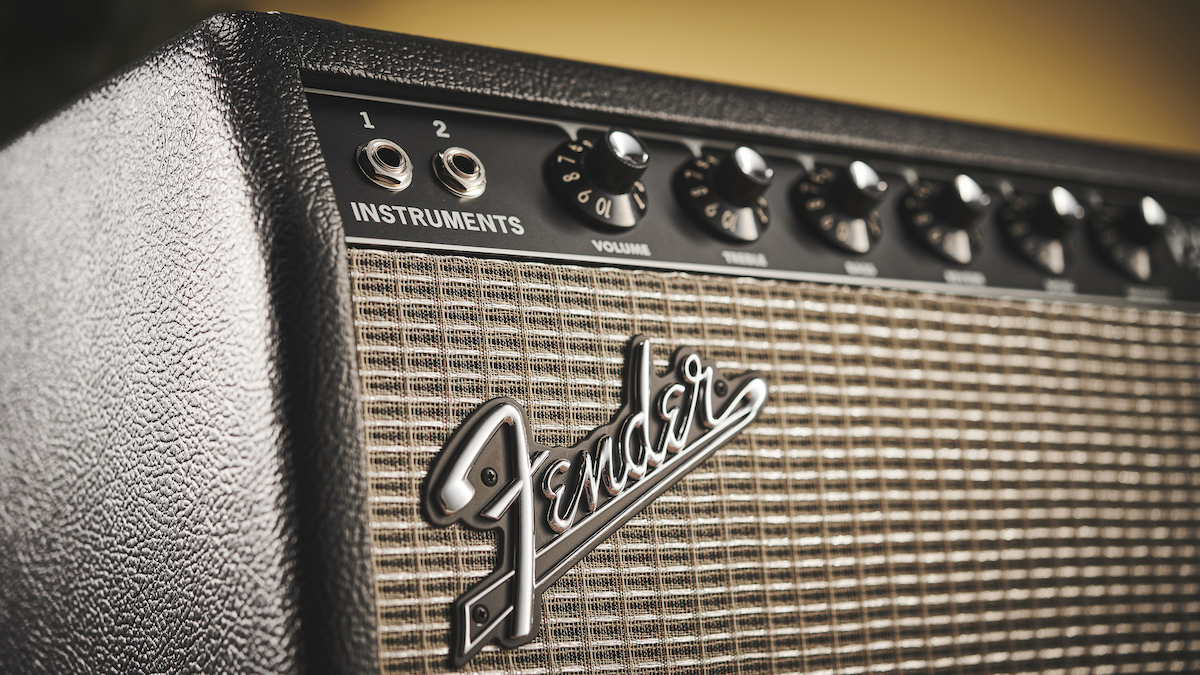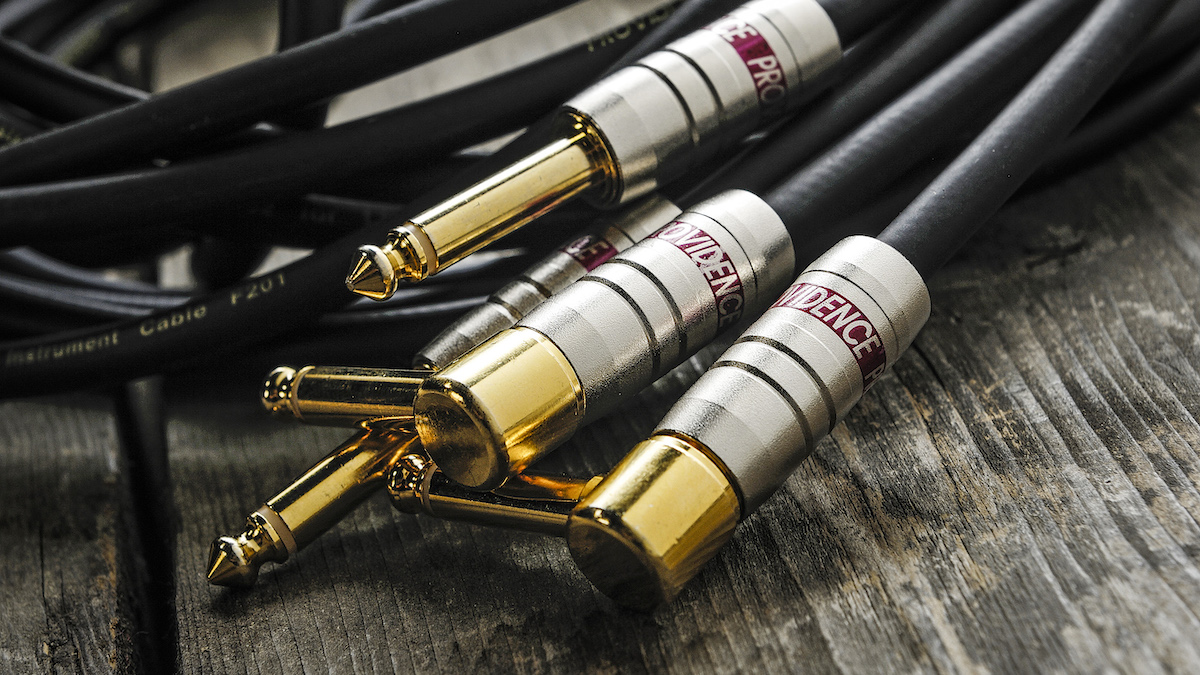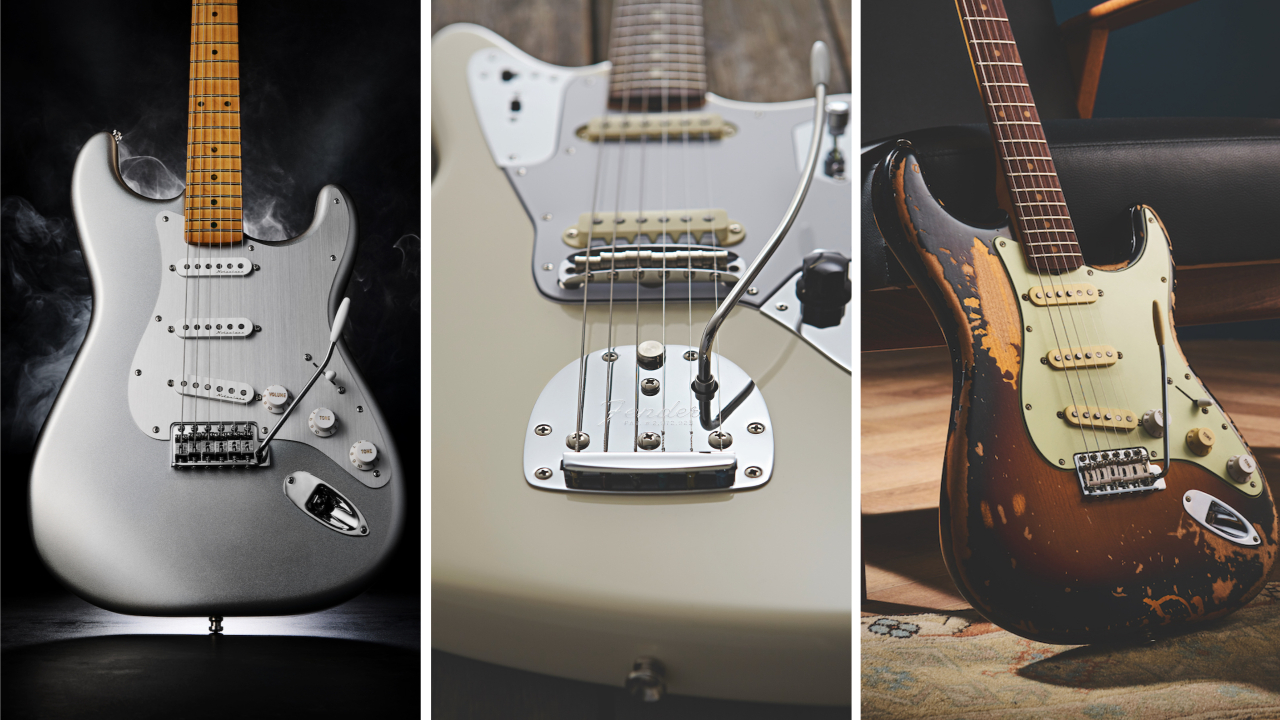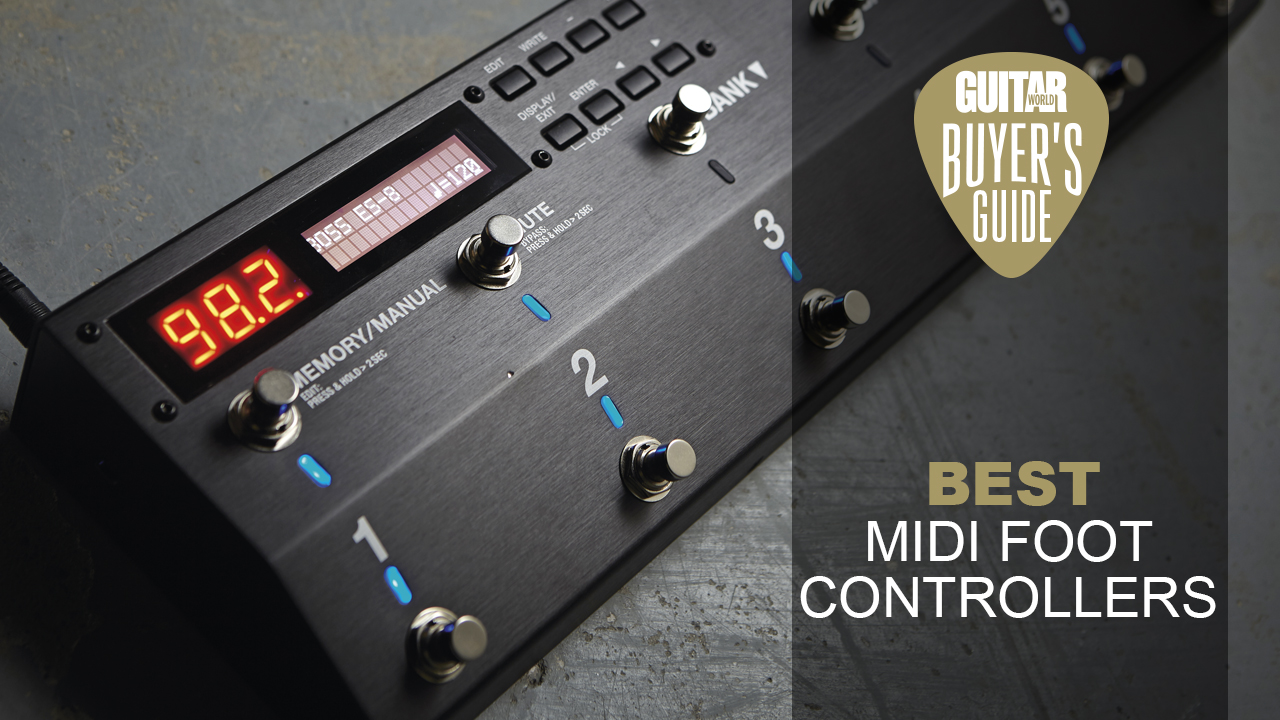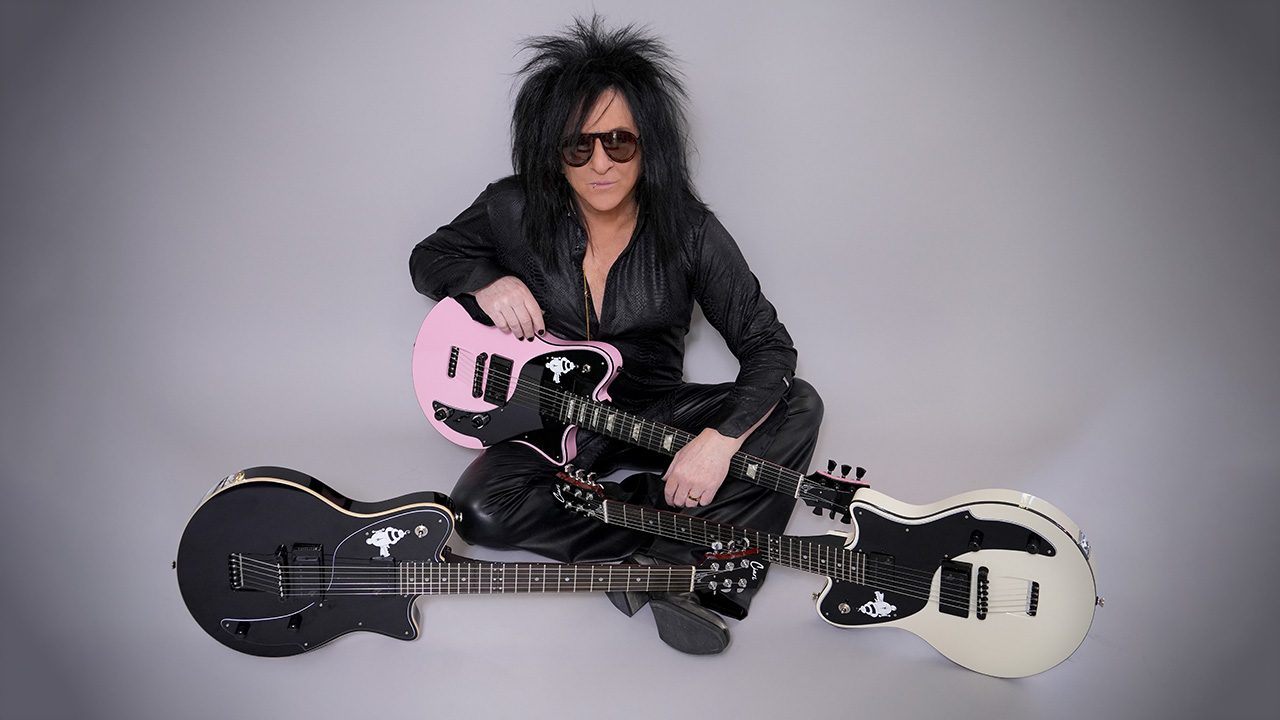Best desktop guitar amps 2025: my top desktop amps for portable practice
Improve your guitar playing with my pick of the most powerful yet portable practice solutions
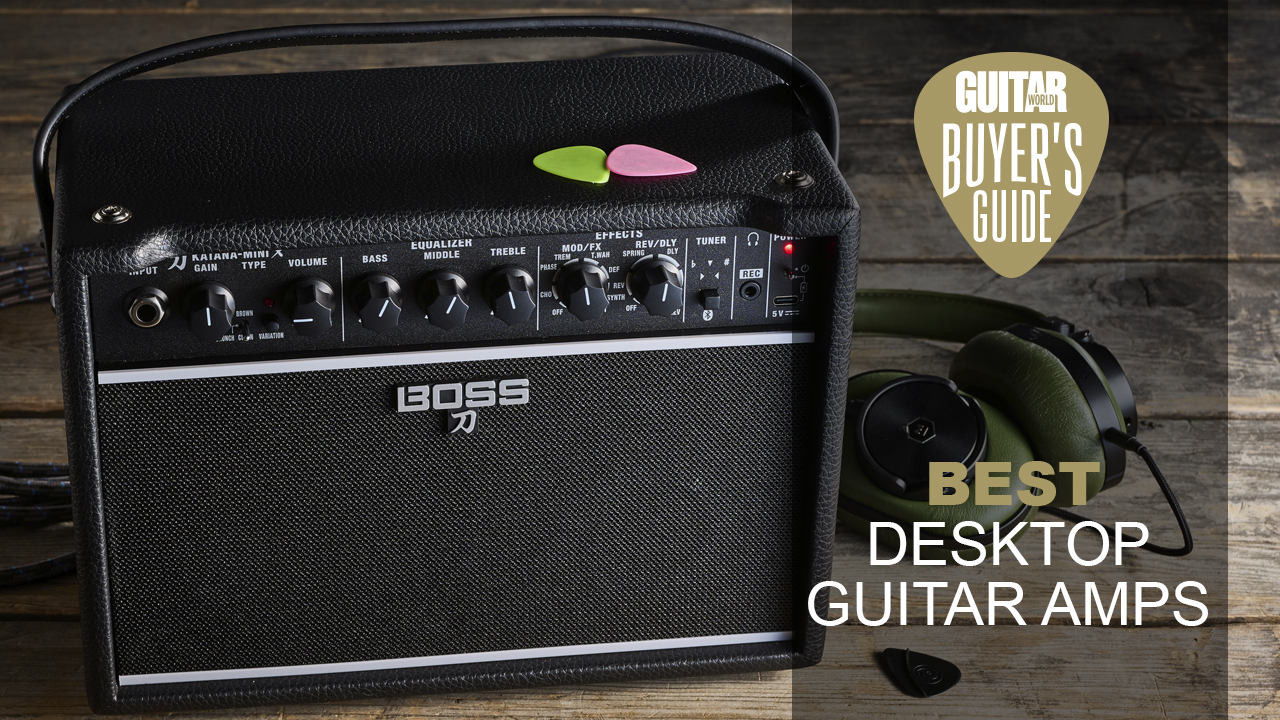
The usurper to the throne of the classic practice amp, the best desktop amps have taken the world by storm over the last few years. Thanks to the advent of modeling tech, they can now deliver a huge array of usable tones and effects from the comfort of your desktop or Swedish-designed shelving unit.
I've tested all of the desktop amps included in this guide, assessing each in terms of build quality, usability, and sound. With over 20 years experience recording and playing live under my belt, I know what a good amp sounds like so you can be assured that all of the amps in this guide will deliver sonically. Where they really differ is in terms of the features, so I've sorted them by use case to make it easier for you to choose.
In my opinion, when selecting a desktop guitar amp your biggest consideration should be the size. Some of the options here are small enough to go on a bookshelf, but others aren't that far removed from a traditional guitar amp head, so do bear this in mind when selecting one for your space. The majority of our choices all have multiple amp and effects tones available, but if you're looking for a desktop amp that can cover all bases and space isn't an issue, we'd go for the Positive Grid Spark 2.
For budget tone seekers or those who need something compact, the Blackstar Fly 3 gets our nod, coming in at well below the $100 mark. It's a little long in the tooth these days but still performs brilliantly as a low-cost practice solution for the home.
If you're new to guitar amps, desktop or otherwise, I've added a handy key terms section to this guide to get you up to speed on guitar amp-specific lingo. For any burning questions, go check out our FAQs section, otherwise, keep scrolling for the very best desktop guitar amps available right now.
My top picks
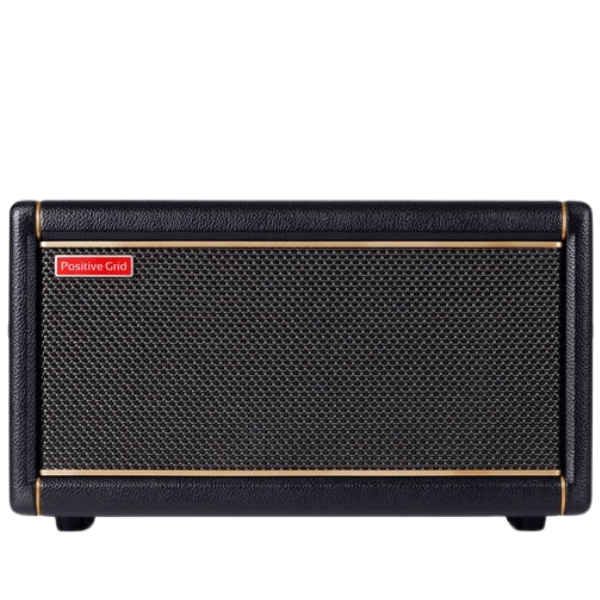
Improving upon the original in pretty much every single way, the Positive Grid Spark 2 retains its title as king of the desktop guitar amps thanks to the addition of a looper, more powerful speakers, and a surprisingly useful AI tone generator.
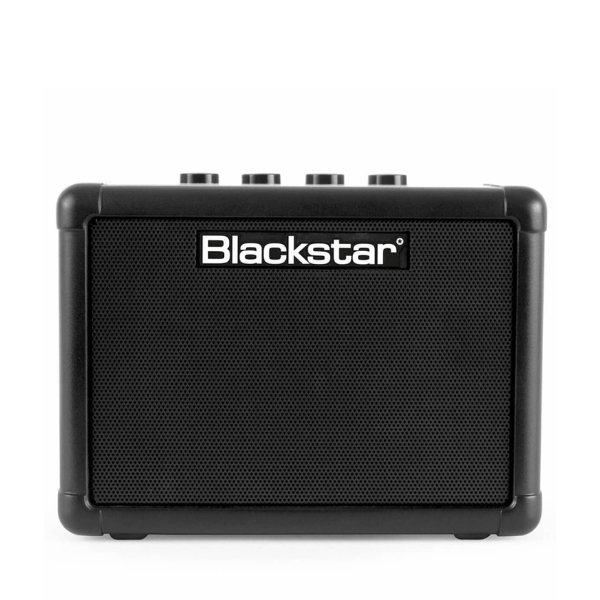
It's been around for a while now but there's still no beating the Blackstar FLY 3 in price. For those on a budget, it's an excellent choice, delivering a great sound for relatively little cash. It's also tiny, so will find a space on even the most cluttered desktop.
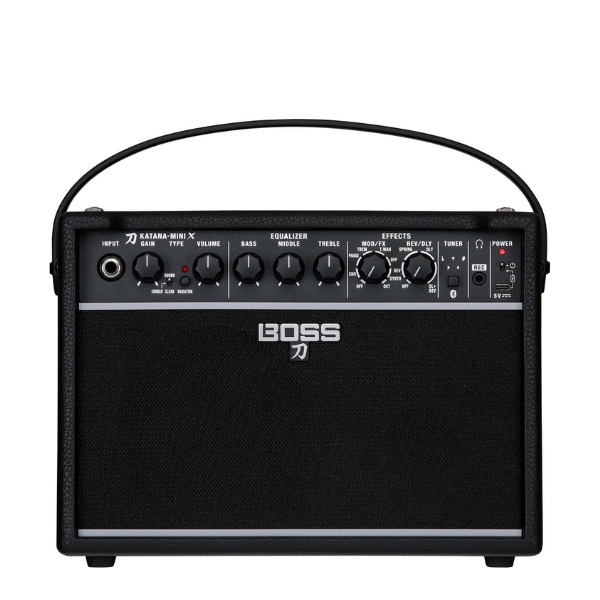
If you're after a compact desktop guitar amp that still delivers killer tones, I'd recommend you check out the Boss Katana Mini X. It's super usable, with all the controls on the front making it great for beginners.
Best overall
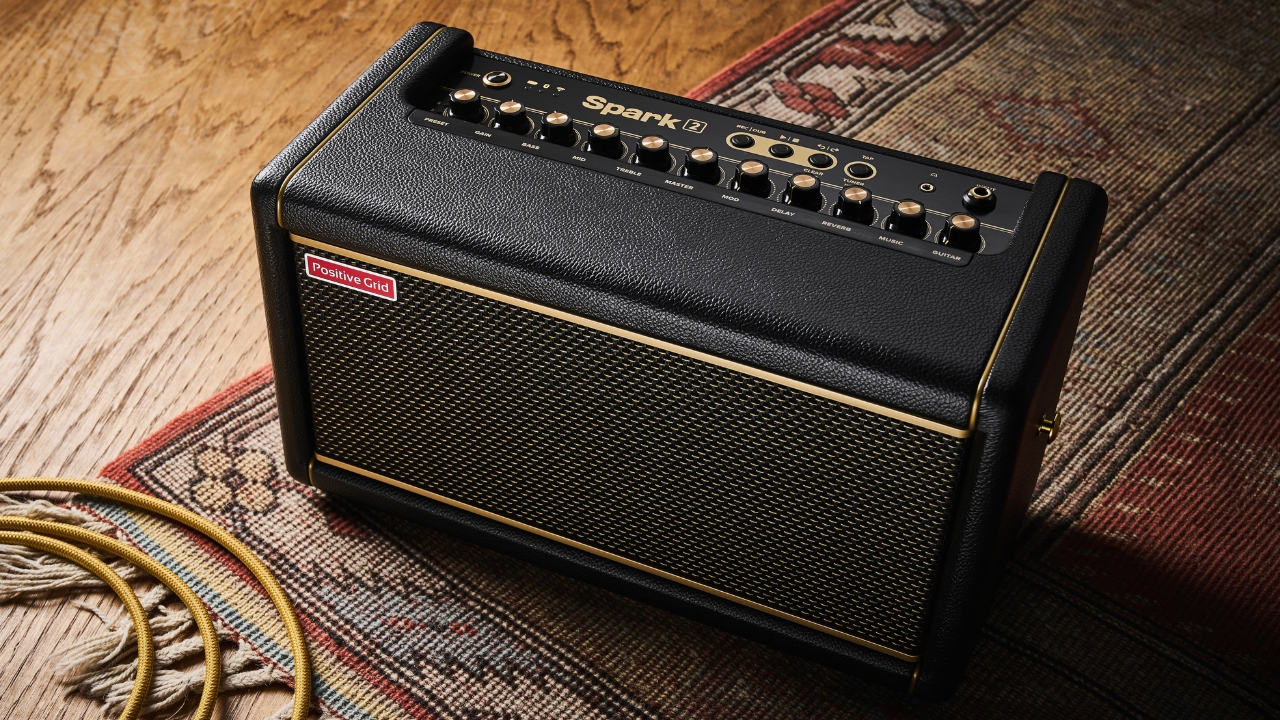
Specifications
Reasons to buy
Reasons to avoid
✅ Buy if you want a desktop amp that can do it all: The sheer range and quality of tones on offer in the Spark 2 are all part of what makes it so popular. If you want tones galore it's the natural choice.
❌ Avoid if you're short on space: This isn't the smallest desktop amp out there, so will take up a bit more room than some of the others on this list.
Overview: The original Spark 40 reigned as the king of desktop guitar amps for a long time, but now it finally has a successor. The Positive Grid Spark 2 takes everything that was great about the original and builds upon its rock-solid foundations, adding features, sounds, and improving the volume.
Usability: The addition of a looper was one of the most requested features by Spark 40 users, and PG has executed it brilliantly here. Incredibly it's actually usable via your smartphone, but it is much better with the optional footswitch. I really loved the groove mode, which allows you to play to a set tempo, but it also has a traditional looper mode if that's more in your wheelhouse.
The AI tone generator creates sounds via text prompts much like Mid Journey, and although the results were mixed when I tested it, it also delivered some scarily accurate tones. You can use it to imitate famous sounds from songs or guitarists, or get really creative and ask it to create bespoke sounds for you.
Sounds: The amp and effects tones here are honestly some of the best I've ever heard. There were plenty of moments in my review that gave us the sort of grin-inducing moments I'm used to hearing when playing through my tube amp, and the pure range of sounds on offer means it will have something for every kind of guitar player.
With 50W delivered via a Class D amplifier, it's plenty loud, too. The upgraded speakers are angled ever so slightly outwards, which helps deliver a very 3D sound, which is particularly noticeable when you start adding stereo delay and reverb effects. To put it simply, it's one of the best-sounding desktop amps I've ever played.

"The original Spark is the definition of a modern classic amplifier, and Spark 2 is the perfect sequel. Adding more of everything in the best possible way, Positive Grid has knocked it out of the park when it comes to the latest iteration of their Spark amp. It is more evolution than revolution, but they’ve delivered everything guitarists have been asking for and more. It’s simply superb."
Read more: Positive Grid Spark 2 review
Best budget
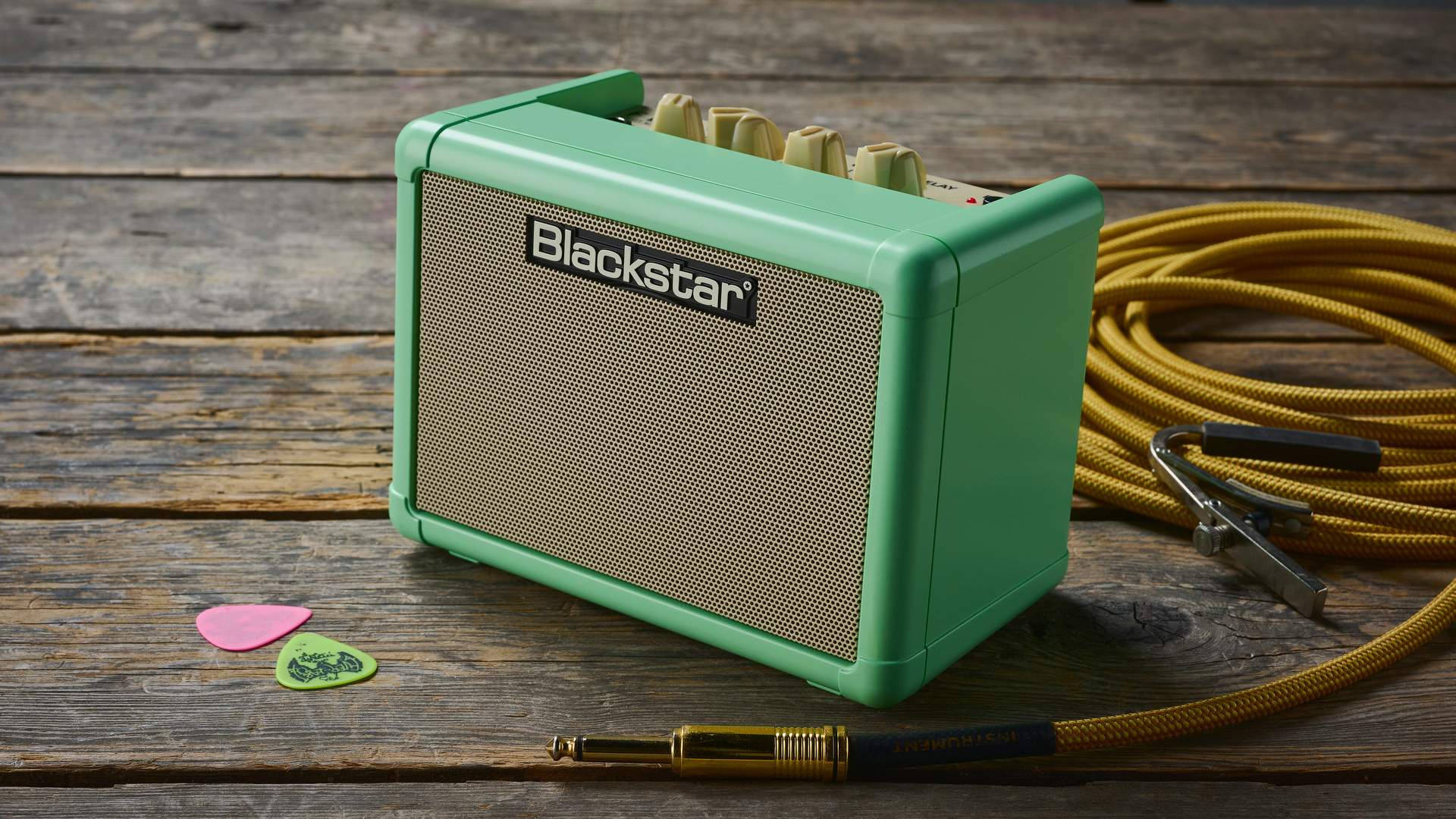
Specifications
Reasons to buy
Reasons to avoid
✅ Buy if you want value for money: The Fly 3 has been around for a while, and thus it costs a lot less than the majority of the amps on this list.
❌ Avoid if you want lots of different sounds: As one of the early desktop amplifiers, it doesn't have loads of modeled tones, and just a single delay effect.
Overview: As far as portable, battery-powered practice amps go, the Blackstar Fly 3may be the most popular one out there. This tiny 3W amp not only delivers two channels (clean/ overdrive) but also has a built-in emulated tape delay. It's ridiculously affordable too, so a great option for guitarists on a budget.
Usability: The controls are simple and will be familiar to anyone who's used a guitar amp, which makes it easy to dial in a great sound. With a single EQ knob it's a great starting point for beginners, but that could be limiting for some players. If you don't need a huge array of tones however, you'll find the Fly 3 a great companion for home practice.
There's no power supply included, so you'll either need to purchase a specific PSU for it, or opt for 6xAA batteries. I'd recommend getting some rechargeable ones too if you're going the battery route, as you'll quickly burn through them. There is the Fly 3 Charge which has a rechargeable battery, but you'll have to pay more for it.
Sounds: It's louder than you'd expect just looking at it, and the two channels can cover a decent amount of sounds from clean to distorted. It won't quite hit really distorted metal tones, but you can cover most of the musical spectrum with it. It's got plenty of volume and it sounded great even when played on lower volume settings.
The ISF knob is pretty subtle to be honest, but it does give you some scope for changing the tonal characteristics of your sound. Between that and your guitar's tone knob you can get a nice array of sounds, but obviously a three-band EQ would give you more to play with.
The delay is a tape-style emulation and really adds some nice depth to the overall tonal quality of the amp. You can get a nice selection of settings from slap back to longer delays, great for adding a touch of emphasis to lead work or getting more spacious with your clean tones.

"It’s really quite hard to beat the Blackstar Fly 3 when it comes to value for money. Coming in well below the $/£100 point, it absolutely delivers on its premise of teeny tiny practice amp on a budget, giving you plenty of options when it comes to sounds. Running the gamut from pristine clean to modern metal, it’s an incredibly capable amp for jamming alongside at home."
Read more: Blackstar Fly 3 review
Best for beginners
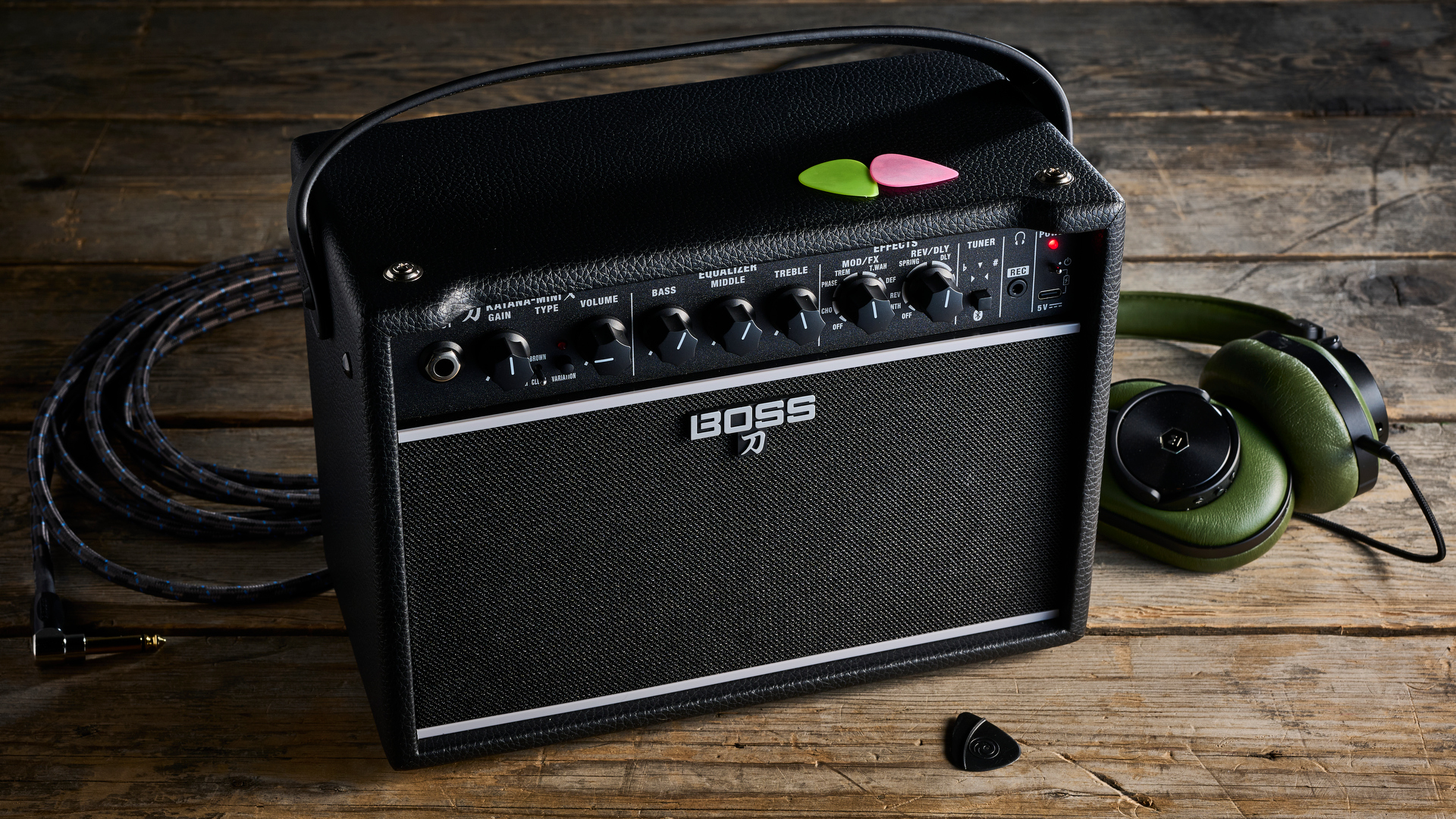
Specifications
Reasons to buy
Reasons to avoid
✅ Buy if you want an easy-to-use option: With all its controls on the front and no apps or software to mess around with, the Katana Mini X is a great choice for beginners.
❌ Avoid if you need easy recording: There's no USB interface built in here, so look elsewhere if you want to record easily while sitting at your desk.
Overview: The newest model in the range of compact Katanas, the Mini X builds on everything that made the previous one so good. This time, it’s got 10W of power and a 5” speaker, alongside double the amount of amp styles (six instead of three). All of this makes for an incredible sounding desktop amp that covers so many different musical styles.
Usability: I absolutely love how simple it is to use the Katana Mini X. In a world where nearly every modeling amp requires you to connect to your smartphone or laptop, having all the controls on the front panel makes a really nice change. You can easily dial in any of the sounds available just using your hands, which makes it a great choice if you want to get away from your phone for a bit.
It uses a battery that's rechargeable via USB-C and handily, you can still use it while it's charging which is a nice touch. While we'd like to have seen mains power available, especially as it's likely to be a permanent fixture in your home, the ability to take it on the go will definitely be more useful for some guitarists.
Sounds: If you're a Katana user you'll know that the core of the amp is the clean, crunch, and brown tones and that's exactly what you get here. It'll have you covered for pretty much any style you can think of, whether it's smooth jazz or death metal. The quality is fantastic too, upgraded significantly from the original Katana Mini to deliver a very lifelike and 3D guitar tone.
Each amp model has a second variation, and when used on the clean tone it unlocks a 'flat' mode that works really nicely with amp modelers. In terms of effects you've got two knobs to choose from, with one selecting modulation and some pitch effects while the other covers your reverb and delays. As you'd expect from Boss they're top quality, and there's plenty of choice to keep your tone fresh when you're practicing.

"Away from the sheer breadth of options offered by app-paired modeling amps, these are the best amp sounds I've heard from a mini combo to date. Boss really has got its basics right with the Katana range, and the three amp types and variations here with a highly responsive three-band EQ count for a lot before factoring in the effects."
Read more: Boss Katana Mini X review
Best for versatility
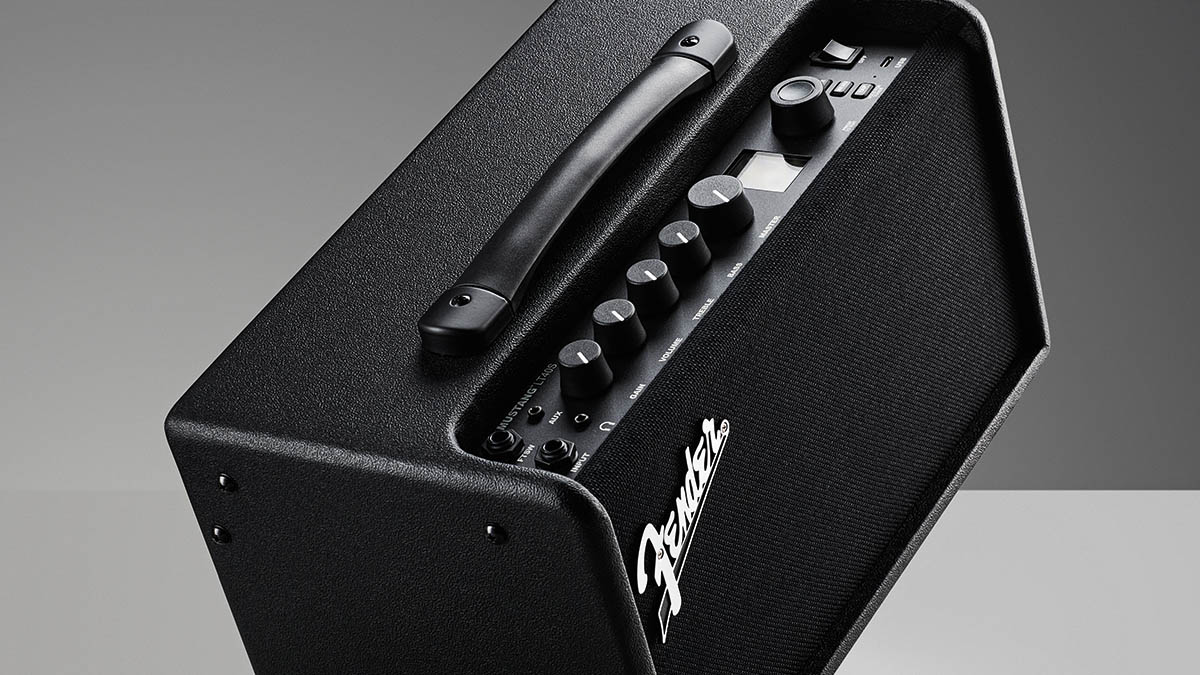
Specifications
Reasons to buy
Reasons to avoid
✅ Buy if you want good volume: This amp is a lot louder than it looks, so if you like to crank it at home now and then it's a great choice.
❌ Avoid if you're using USB-C: The lack of a USB-C is probably a cost-cutting measure, but also can make it a bit of a hassle to link with newer tech.
Overview: Fender hasn’t rushed into making a desktop guitar amp, but the one they’ve come up with is really quite good. Taking their popular Mustang modeling amp format they’ve shrunk the size, added full-range speakers, and made a properly good desktop guitar amp.
Usability: Used with the Fender Tone LT App, you can expand the sounds of the LT40S massively, from the base level presets. Add a headphone out, aux in, and a footswitch input and you have one of the most complete desktop amps on the market.
The emphasis on actual knobs for tweaking your EQ is welcome, and the large rotary dial makes switching and editing presets a breeze. That said, the controls and built-in screen being on the top might make it a bit annoying if you're sitting down at your desk to play.
Sounds: The quality of the presets on the L40S is really great, and I found in my testing I seldom had to do much editing to get the sounds where I wanted them to be. There's plenty of amp choice to cover a huge array of styles, but if you love Fender amp tones you'll find yourself at home here.
The effects are fantastic quality too though, and I was really impressed in particular by the octave, delay and reverb tones I was able to get out of the LT40S. It's also incredibly loud when you need it to be, delivering some room-shaking tones far beyond the volume you'd expect from a desktop guitar amp.

"The screen might be small, but the menu system to select presets, amp and effects models is a breeze to use, and I prefered it to using a separate app. Alongside a range of drives with familiar names that hint at inspirations including a Klon, Blues Driver and Tube Screamer, there are reverbs, modulations and delays. Though the LT40S’'s 25 effects are not as many as some, it’s still everything you’d need for classic tones, and they’re well voiced."
Read more: Fender Mustang LT40S review
Best compact
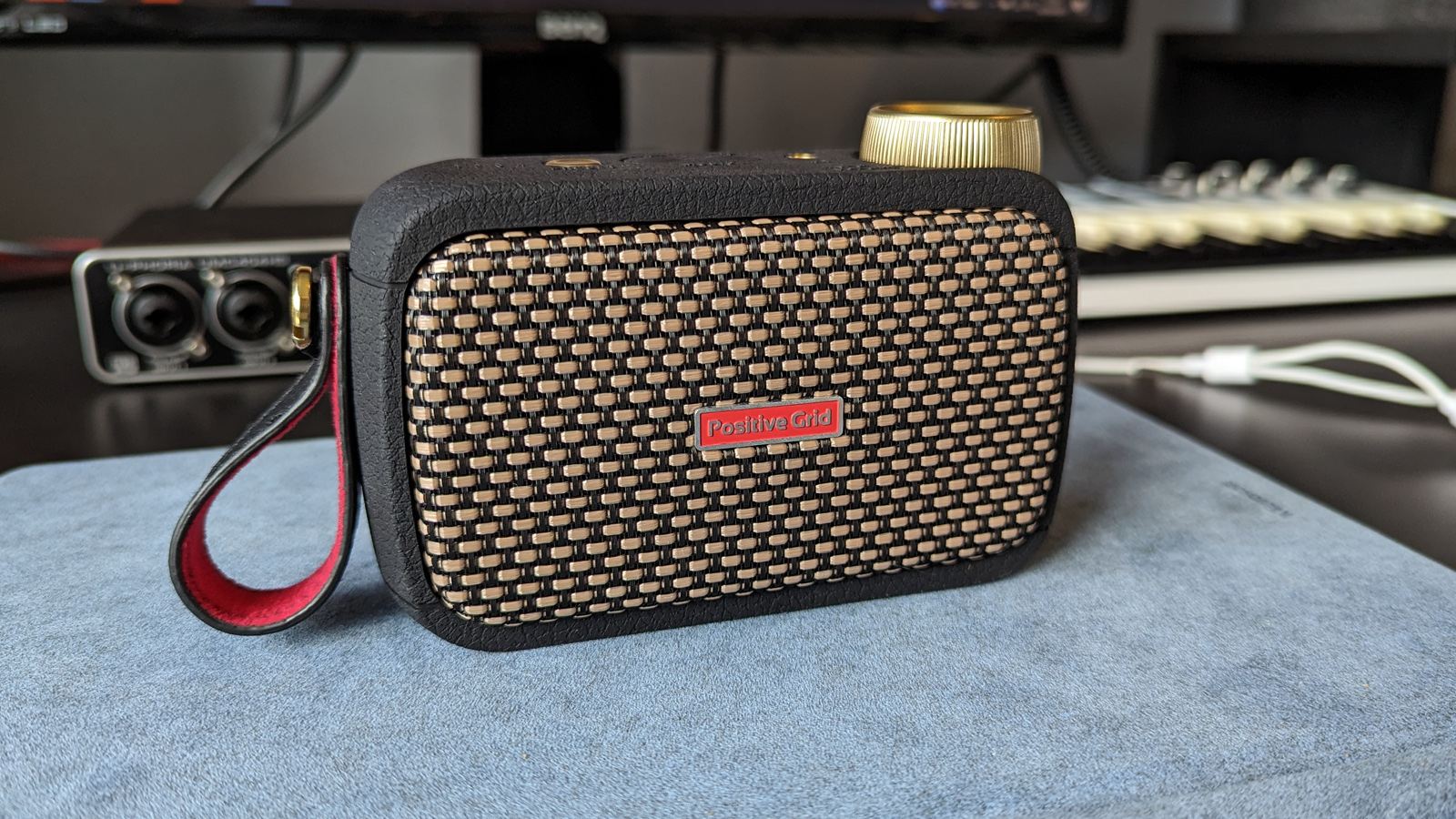
Specifications
Reasons to buy
Reasons to avoid
✅ Buy if you need a tiny guitar amp: The Spark Go is minuscule compared to some of the others on this list, making it perfect for those who are short on space.
❌ Avoid if you're playing bass or drop-tuned guitars: Due to its small size, the bass response is lacking a little so it'll struggle to project instruments in the low-end.
Overview: It's one of the smallest desktop amps you can get but don't let the look fool you, Positive Grid Spark GO is incredibly loud. Despite only being rated at 5 watts, it offers a room-filling sound and handily doubles as a Bluetooth speaker.
Usability: As well as four preset slots available via a button push on the top panel you also get a headphone out and USB-C connector to use it as an interface. It doesn't provide the most control, but it's the price you pay for such a compact unit.
The Spark App is easy to navigate, and you get some powerful practice tools too, like the Smart Jam function that reacts to your playing as well as Auto Chord that works out the chord structures of your favorite songs.
Sounds: With 33 different amp models, you'll never be short of tones whether it's Fender cleans or Soldano-style high gain you're after. It honestly shocked me with how loud it is, giving a hearty voice that far outweighs the diminutive size.
As a natural drawback due to that small size though, it's lacking in the low end compared to a larger amp. When using my baritone, I found it overpowered it at times, but you can eke some phenomenal sounds out of it with a regular guitar.

"I can’t think of a better way to practice on the go or at home than this fantastic mini amplifier. It won’t take up loads of space whilst simultaneously filling the room with its impressive volume and satisfying any guitar player with a high-fidelity sound. For guitarists just getting started, or those looking for a small desktop amp, Positive Grid’s Spark GO is a fantastic option."
Read more: Positive Grid Spark GO review
Best for simplicity
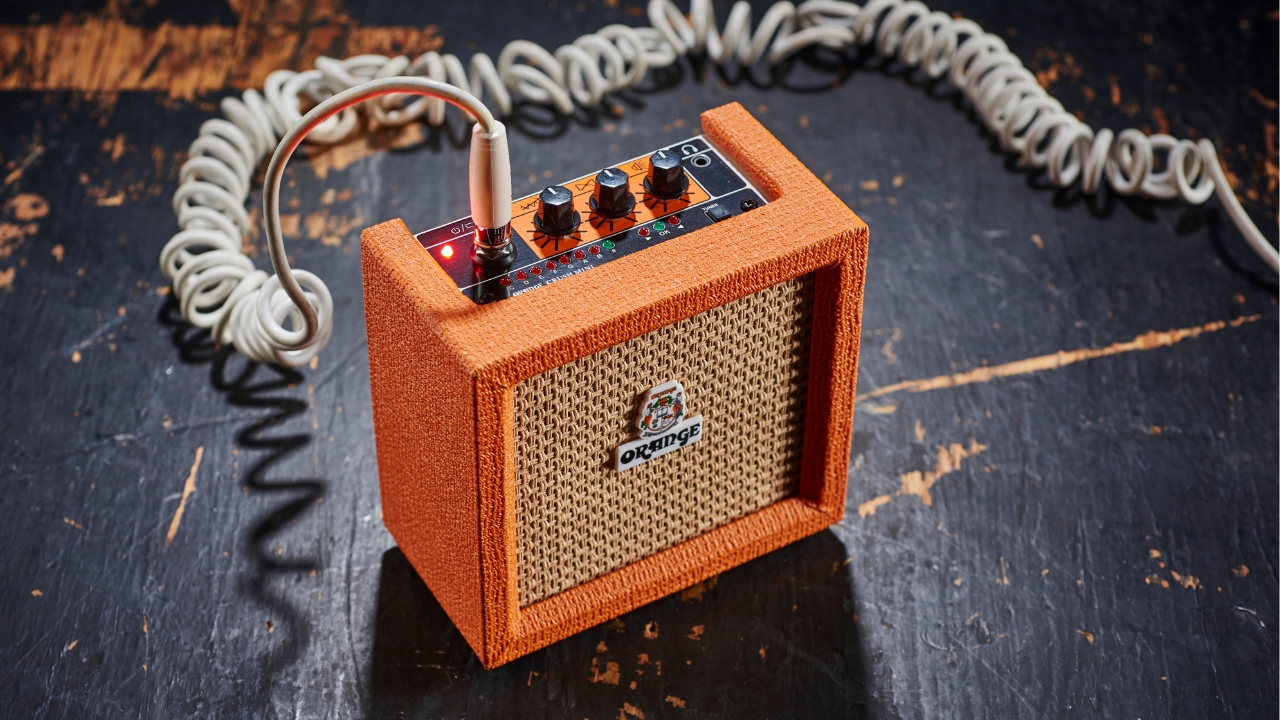
6. Orange Crush Mini
Our expert review:
Specifications
Reasons to buy
Reasons to avoid
✅ Buy if you want a simple plug-and-play amp: The Orange Crush Mini doesn't feature any modeled tones or dedicated smartphone apps. Great for those who already have a pedalboard or just want great tone fast.
❌ Avoid if you like lots of effects: Many amps on this list feature a smorgasbord of different effects, but this amp is just pure tone and nothing else.
Overview: The Orange Crush Mini takes the format of the British amp makers popular practice amp range and makes great tone smaller than you ever thought possible. If you’re not one to menu dive and just want to play, the Crush Mini makes it easy.
Usability: It’s got a built-in tuner so you’ll always be rocking in the right key, as well as aux input for jamming along to your favorite tunes. Probably the best feature is the 8 ohms speaker out, which lets you use it as a miniature amp head and get that beefy Orange sound without carting around a massive amp.
Sounds: It’s got that characterful Orange crunch tone when you dial up the gain and whilst the clean tone is nice, it’s admittedly not the loudest. If you’ve ever used an Orange one knob EQ you’ll know it’s far more versatile than you’d first think, especially when used in conjunction with your guitar’s tone knobs and different pickup positions.
It won't please those who want lots of different sounds from their amp, but if you value simplicity and just want to plug in and play, you'll love the Crush Mini.
Spec comparison
To make it easier for you to see judge amps side by side, I've created this handy spec comparison utilizing the key stats to help you get an overview of the top picks in this list.
Model | Watts | Amps | Effects | Speakers | Weight |
|---|---|---|---|---|---|
Positive Grid Spark 2 | 50W | 33 | 43 | 2x4" | 5.5kg |
Blackstar Fly 3 | 3W | 2 | 1 | 1x3" | 0.9kg |
Boss Katana Mini X | 10W | 6 | 10 | 2x3" | 2.2kg |
Fender Mustang LT40S | 40W | 20 | 25 | 2x4" | 5.6kg |
Positive Grid Spark Go | 5W | 33 | 43 | 1x2" | 0.3kg |
Orange Crush Mini | 3W | 1 | 0 | 1x4" | 0.9kg |
Also consider
The above amps are what we reckon you should be spending your money on, but we also appreciate that guitarists are a varied bunch, so they may not suit your particular needs. So here's a selection of more desktop guitar amps you can consider:
Yamaha THR30II Wireless
30W | 2 x 3.5" | 15 amps | 10 FX
The Yamaha THR series doesn't look much like a guitar amplifier, and that's the idea. Styled after home audio equipment, the THR30II can sit anywhere in the home, and the non-guitarists can stream music to it via Bluetooth. Our testing showed convincing onboard modulation, reverb, and delay effects, 15 amp tones courtesy of Yamaha’s Virtual Circuitry Modeling, there is a whole lotta tone here.
★★★★★
Read more: Yamaha THR30II Wireless review
Positive Grid Spark Mini
10W | 2 x 2" | 33 amps | 43 FX
We've had a Spark MINI sitting on our desk for the last year or so and it's rare that a day goes by where we don't fire it up and blast out some licks. Great for practicing that complex piece or just creating some riffs of your own, the huge variety of amp models and effects means you never get bored of playing.
★★★★½
Read more: Positive Grid Spark Mini review
Vox Adio Air GT
50W | 2 x 3" | 11 amps | 8 FX
This is a strong player in the desktop amp field, helped by Vox’s partnership with another giant in the digital music field, Korg. It has a powerful 50-watt (2x 25-watt) power output, 17 amp models, and up to 19 effects. The Adio can do audio streaming and remote editing via Bluetooth using Vox’s Tone Room app, and it can run on alkaline or rechargeable batteries. The Adio is also bundled with the popular Jamvox app
★★★★
Read more: Vox Adio Air GT review
Blackstar ID:CORE BEAM
10W | 2 x 3" | 6 amps | 3 FX
Blackstar’s BEAM (Bass, Electric, Acoustic, and Music) is a popular desktop solution. It’s compact, so it’s great where space is limited, and it features the familiar range of Blackstar clean and overdrive sounds, together with studio-quality modulation, delay, and reverb effects.
★★★★½
Laney Lionheart Mini
3W | 1 x 3" | 2 amps | 1 FX
The market is awash with mini versions of famous amps. Although the Laney may not be the most recognizable, it may be the best. This petite 3-watt amp delivers a big sound that is more than enough for at-home practice, and the rather attractive navy exterior and blue and beige grill cloth mean it looks great as well.
★★★★
Marshall MS-4 Micro Stack
1W | 2 x 2" | 1 amp | 0 FX
We all love the idea of standing in front of a Marshall full-stack and letting loose on some classic rock-inspired riffs and bluesy lead guitar work. Unfortunately, a full stack is just not really compatible with modern-age living: enter the Marshall MS-4 micro stack. It’s small in size but it packs a surprising punch with its 2x2” speaker configuration. As you might imagine it’s a typical hard rock tone, and riffs by Zeppelin and AC/DC pair perfectly with its overdriven sound.
★★★★
How to choose
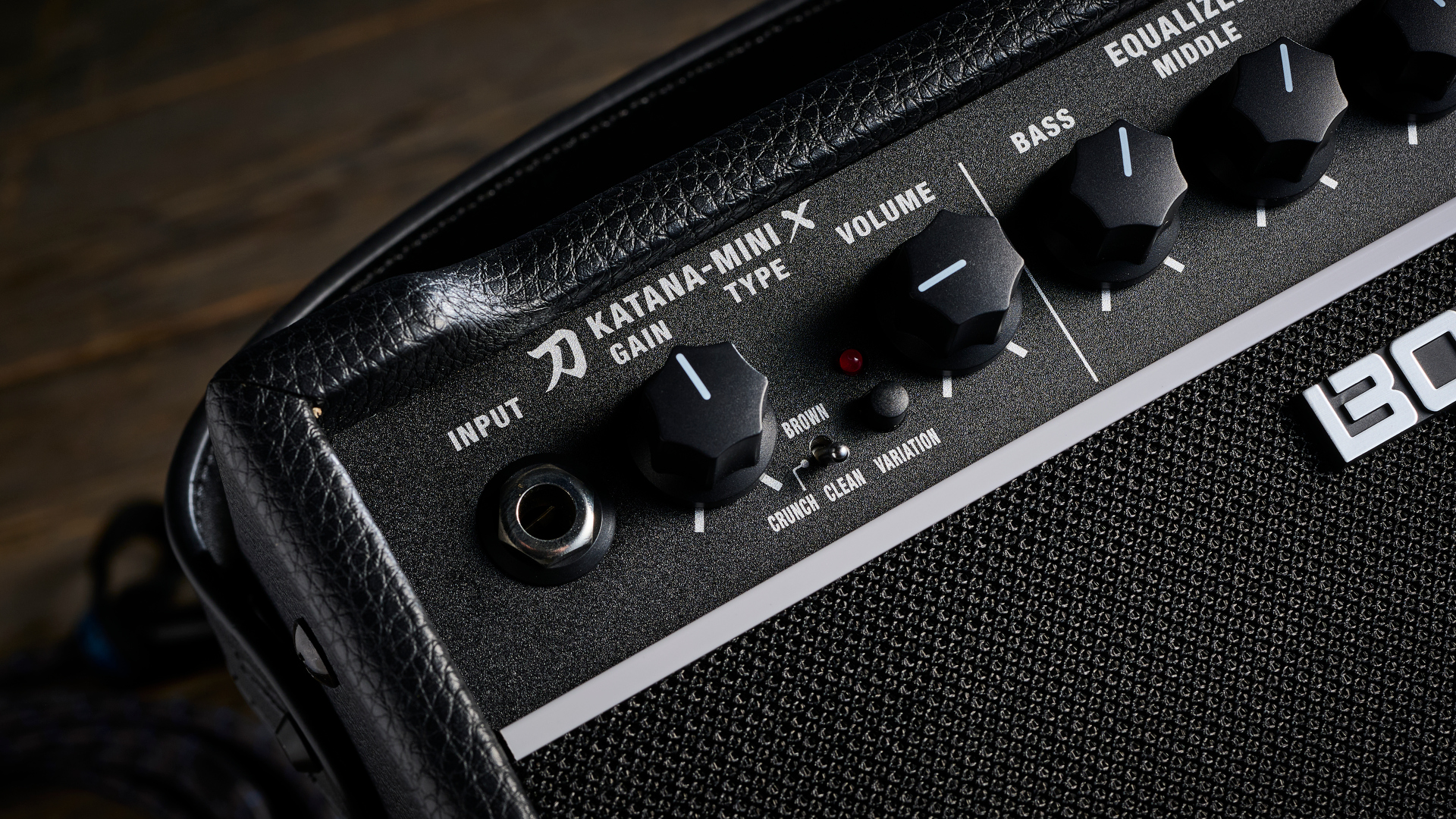
With any amplifier, the most crucial thing to think about is the sound you're going for. Granted, you probably won't be playing Madison Square Garden with your desktop amp so it needn't be the most pristine tone ever, but it's important to find the right sound for you nonetheless.
Not all of these multi-channel or modeling amps are capable of re-creating every tone you can think of, so you'll need to put some thought into which desktop guitar amp suits you best.
Volume
You can trust Guitar World
If it’s just for home use on your own, then you’ll only need a few watts. Something like 5W should be plenty, though given that all of these are solid state or modeling amps, as opposed to tube, you can get something with more power and just turn it down and your tone won’t suffer.
If you’re looking to use your desktop amp as a portable amp to take outside of the house, maybe to jam with friends, then you’ll want something with a little more power. Ideally 10W and over should be enough to be heard alongside other musicians. If you’re playing with a drummer, however, then you’ll probably be looking at something a lot bigger.
Modeling & effects
Whether or not you need effects and amp modeling on your desktop amp is completely up to you. Some of them have dozens of different amp styles and effects on there, whereas others might just be a simple analog amp with just a few controls and no effects.
If you’re getting to grips with all the different types of amps out there, modeling can be a good way to get a brief understanding of what they’re all about. You can then start to figure out what kind of thing you like. It’s the same thing with effects too – sometimes you need to try them out to see if they’re for you
Of course, some players just prefer a simple, unfussy layout, perhaps with controls for gain, volume and some EQ. It’s all down to personal preference!
Recording
You’ll find that some of the best desktop guitar amps even double as a recording interface. It’s usually in the form of a USB slot, though not always (also, just because it has a USB slot doesn’t necessarily mean it can work as an interface, so do check).
This feature can free up some space on your desktop, as you then don’t need a dedicated recording interface should you want to do a little guitar tracking.
Additional features
Popular features on the best desktop amps include headphone output, recording output, Bluetooth – which essentially turns your amp into a compact sound system, tuner and more.
None of these are necessary for it to be a good amp; they’re just additional extras that might make your life easier. If you don’t need those features though, you can probably get something without them that means you get more for your money.
Key terms
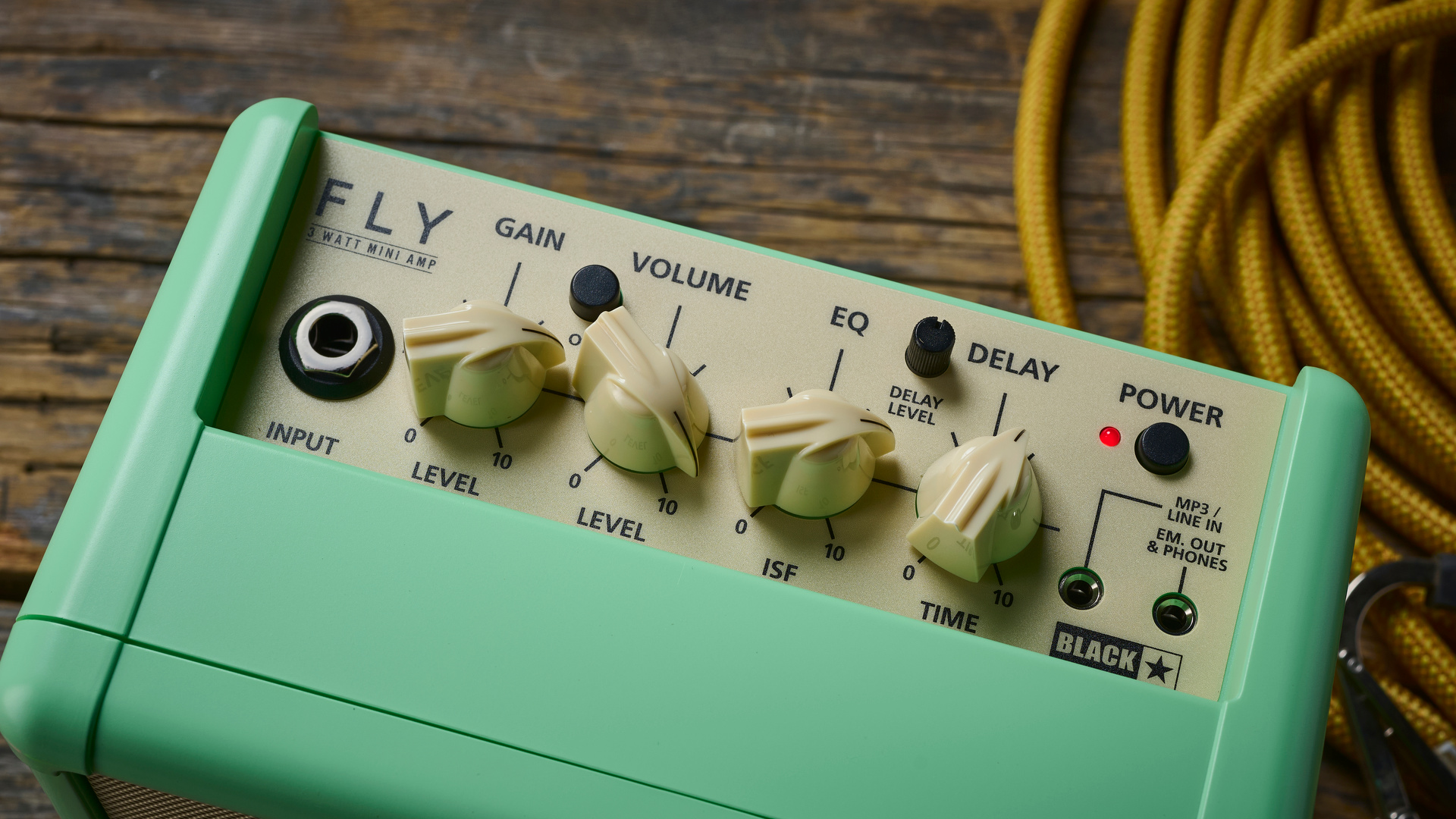
If you're confused by any of the language being bandied about in this guide, I've put together these key terms that should explain most of the common language used when referring to desktop guitar amps.
- Channels - the separate signal paths on an amp, usually used to change between clean and overdrive sounds.
- Clean - A clear guitar tone without any overdrive or distortion.
- Delay - An effect that repeats the guitar signal, adding a sense of depth.
- Distortion - An aggressive effect that produces a heavier sound, typically used in rock and metal.
- EQ - Controls that change the amp's tonal balance, usually bass, middle, and treble.
- Footswitch - A pedal that changes channels on the amp or adds an effect.
- Modeling - A digital technology that simulates the sound of a tube amp or other effects pedals.
- Modulation - Effects like chorus, flanger, and phaser which affect the signal via delay or pitch changes.
- Overdrive - A warm, saturated effect found when you drive an amp or pedal hard.
- Power supply unit (PSU) - A plug or unit that provides power for your amplifier.
- Reverb - An effect that simulates the sound of an amp in a room, or played through a spring or plate.
- Stereo - Using two speakers for a wider sound.
- Tube amp - An amplifier that utilizes vacuum tubes for a warm tone.
FAQs
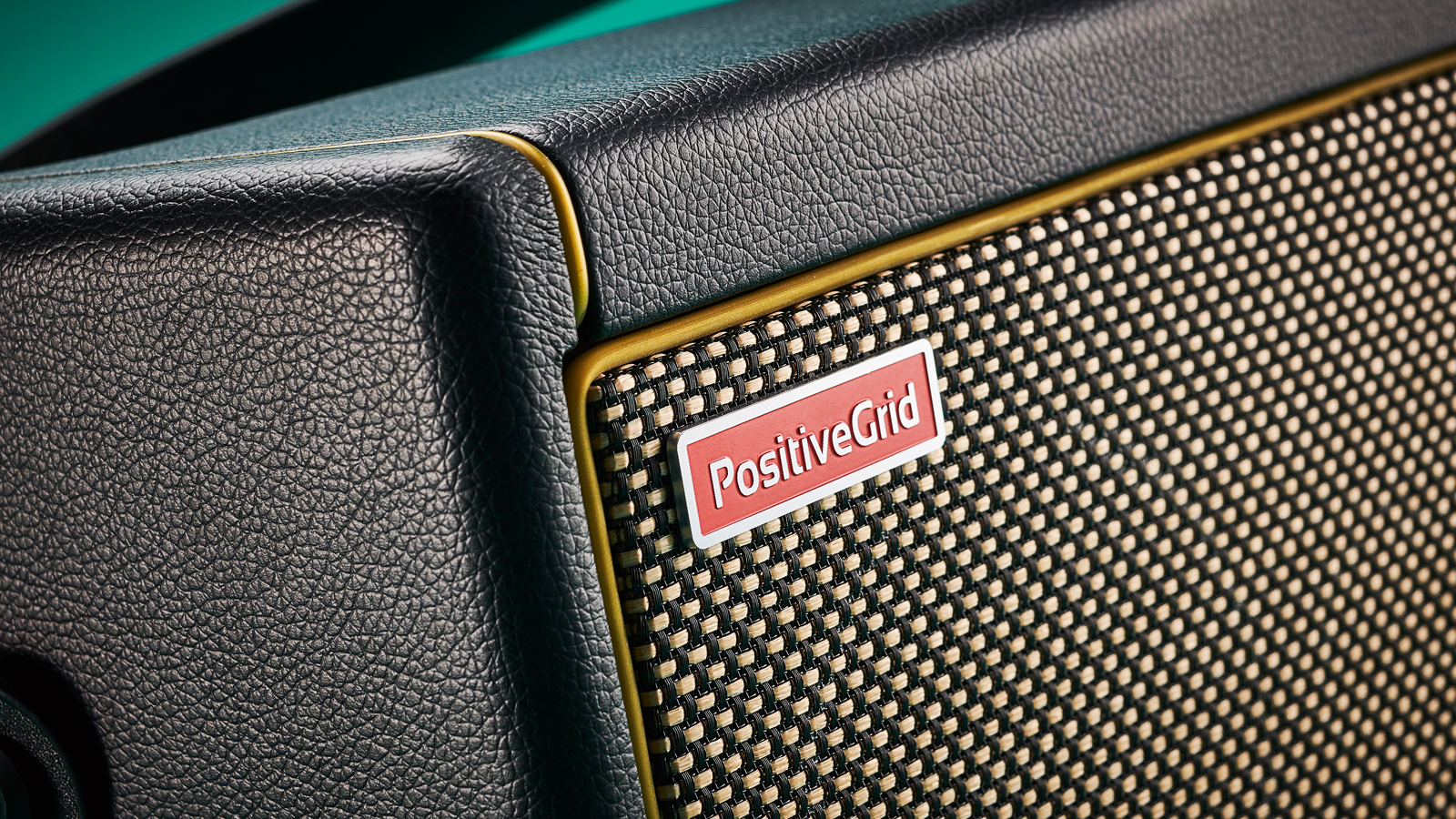
What is considered a desktop guitar amp?
Desktop guitar amps are a relatively new phenomenon, but the idea is that it's a practice amp that sits comfortably on your desktop or shelf, and doesn't look out of place there. Desktop amps can range from tiny single digit watts right through to 50-watt amps, so the term covers a lot of different types.
Is a desktop guitar amp loud enough to gig?
Technically you can gig any amp, provided it's mic'd up. The problem you'll encounter with using a desktop amp for gigging is those shows where there's minimal PA and you need to use your stage volume. It's a rare occurence nowadays, but it does happen so we'd stick to a proper gigging amp or floor modeler for gigging.
Is it bad to practice electric guitar without an amp?
It's not necessarily bad, but it's probably not the best either. An electric guitar generates the vast majority of its tone via the pickups, so when you're playing without an amp you're going to be missing out on a lot of the nuance of playing an electric guitar.
How we test
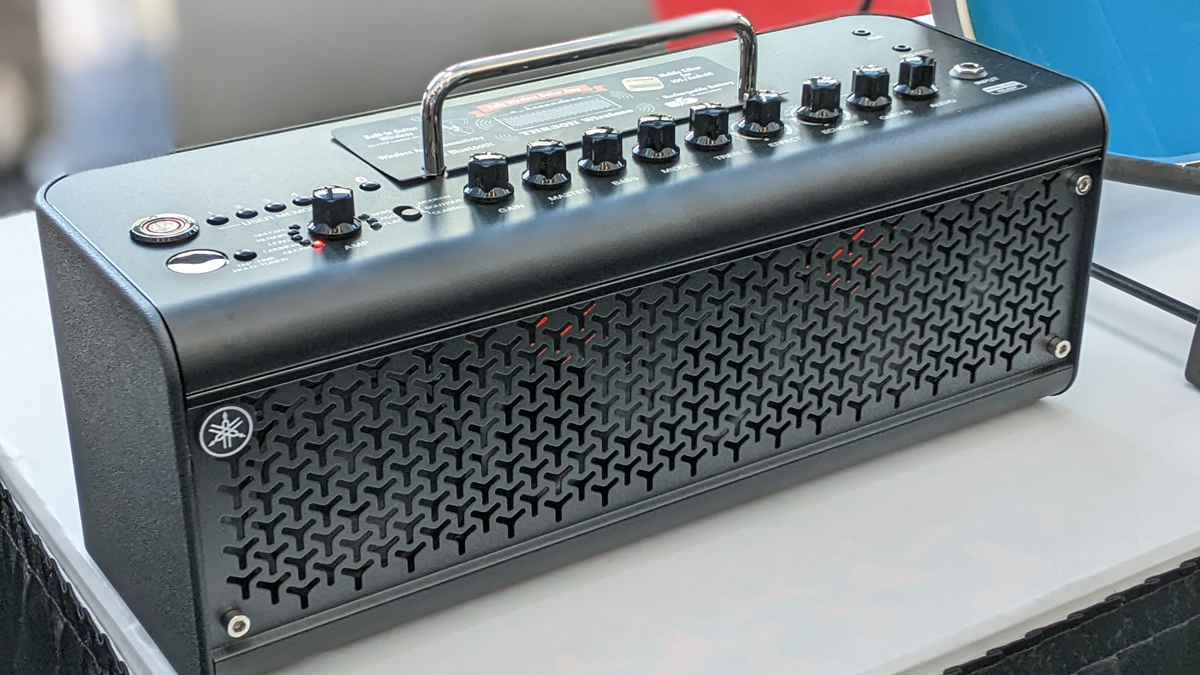
When it comes to recommending a desktop amp, we are looking for a well-made unit that delivers a versatile tone at a manageable volume for home practice. So for that reason, we'll pay careful attention to the following factors when testing the best desktop guitar amps.
For us, all amps should be well made and sturdy, regardless of their application. Guitar amps should feel robust and able to withstand anything you throw at them - something that's particularly important with a portable desktop amp. Of course, the controls and dials should feel smooth with just the right amount of resistance, not flimsy or unresponsive.
As we are testing desktop amps, we expect to see a plethora of practice aids - such as a wealth of tones, Bluetooth connectivity, headphone sockets, and more. So we'll spend time navigating the added extras to see precisely what you are getting for your money. These features should be intuitive and not so complicated that setting up the amp takes away from your practice time.
Read more about our rating system, how we choose the gear we feature, and exactly how we test each product.
Related buyer's guides
- Keep your pedals in check with the best pedalboards
- Take a look at some of the best gifts for guitar players
- Find your new sound for less, with the best guitar amps under $1,000
- Best guitar audio interfaces: record your guitar at home
Get The Pick Newsletter
All the latest guitar news, interviews, lessons, reviews, deals and more, direct to your inbox!
Nick Guppy was Guitarist magazine's amp guru for over 20 years. He built his first valve amplifier at the age of 12 and bought, sold and restored many more, with a particular interest in Vox, Selmer, Orange and tweed-era Fenders, alongside Riveras and Mark Series Boogies. When wielding a guitar instead of soldering iron, he enjoyed a diverse musical career playing all over the UK, including occasional stints with theatre groups, orchestras and big bands as well as power trios and tributes. He passed away suddenly in April 2024, leaving a legacy of amplifier wisdom behind him.
- Matt McCrackenJunior Deals Writer
- Richard Blenkinsop
- Daryl RobertsonSenior Deals Writer
